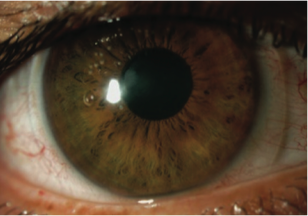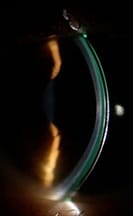Since scleral lenses are designed to vault over the cornea entirely, they create a fluid-filled space between the back surface of the lens and the cornea. The cornea stays moist enhancing ocular comfort.
Irregularly shaped corneas, such as in keratoconus, post-corneal surgery, or previous corneal injury, may prohibit good vision with glasses or disposable soft contact lenses.
Scleral lenses counteract the shape of the cornea by creating a fluid-filled chamber or “tear lens” between the irregular corneal surface and the back surface of the contact lens. Additionally, scleral lenses provide comfort comparable to, and in some cases, superior to soft contact lenses. Unlike standard small gas permeable contact lenses, scleral lenses are not prone to shifting or “popping” out of place.






